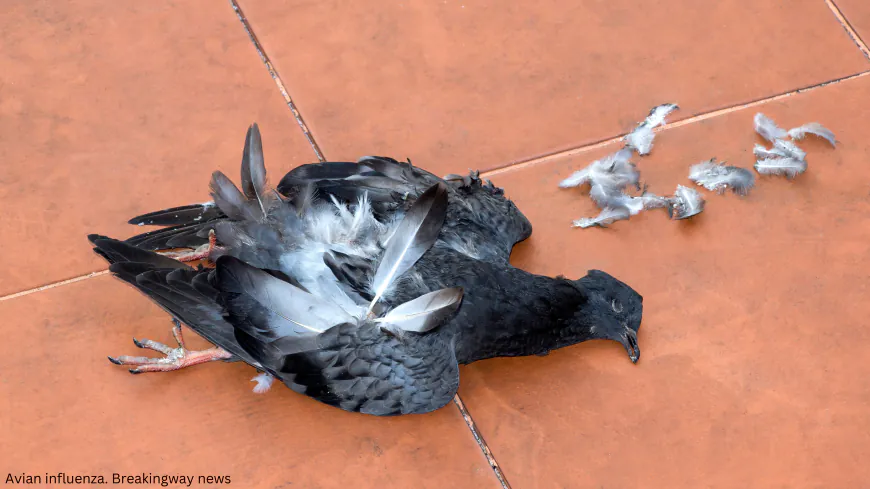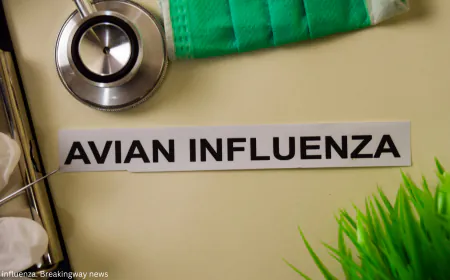Avian Influenza (Bird Flu): Symptoms, Prevention, and Treatment Explained
Learn about avian influenza (bird flu), its symptoms, modes of transmission, treatment options, and effective prevention methods for humans and birds. Stay informed to protect your health and poultry farms.

Avian influenza, commonly known as bird flu, is a viral disease caused by viruses (H5N1) belonging to the Orthomyxoviridae family. The virus primarily spreads among wild aquatic birds but can infect domestic poultry, other bird species, and even animals. In humans, avian influenza can be contracted through direct contact with infected birds' saliva, mucus, or feces or by inhaling virus-laden droplets. The symptoms range from mild, such as a cough, to severe acute respiratory illness, which may lead to death.
- Modes of Transmission of Avian Influenza
Humans primarily become infected with bird flu through:
- Prolonged contact with live infected poultry, such as on farms.
- Consumption of undercooked meat or eggs from infected birds.
- Occasionally, contact with wild birds or infected animals.
Human-to-human transmission of avian influenza is exceedingly rare but remains a concern.
- Types of Avian Influenza
Avian influenza is classified based on its severity and impact on birds and humans:
- Low Pathogenic Avian Influenza (LPAI) :
This milder type of bird flu often causes negligible or unnoticed symptoms in birds.
In humans, it results in mild flu-like symptoms.
- Highly Pathogenic Avian Influenza (HPAI) :
This severe type of bird flu causes significant disease and high mortality rates in birds.
It spreads rapidly, especially among poultry, leading to devastating outbreaks.
In humans, it can cause severe complications, including acute respiratory distress syndrome (ARDS) and multi-organ failure.

- Symptoms and Signs of Avian Influenza in humans:
- High fever
- Cough
- Sore throat
- Runny or stuffy nose
- Muscle or joint aches
- Headache
- Fatigue
- Nausea and vomiting
- Diarrhea
- Eye infections (conjunctivitis)
- Pneumonia
- Acute respiratory distress syndrome (ARDS)
- Multi-organ failure

- Symptoms and Signs of Avian Influenza in birds:
- Sudden death without prior signs
- Decreased egg production
- Swelling around the head, neck, and eyes
- Respiratory distress, coughing, or sneezing
- Lethargy and lack of coordination
- Diagnosis of Avian influenza
The diagnosis of bird flu in humans and birds relies on laboratory testing. A swab is collected from the suspected patient or In humans, common sites for sampling include the throat, nose, and sometimes the lower respiratory tract, such as the lungs, via sputum or bronchoalveolar lavage.
For birds, swabs are often taken from the conjunctiva, trachea, cloaca, or oropharyngeal region, depending on the symptoms and the bird's condition. These samples are sent to a lab for analysis. Common diagnostic methods include:
- Reverse Transcription Polymerase Chain Reaction (RT-PCR): Detects viral RNA.
- Serological Tests: Such as ELISA, which identifies antibodies against the virus.

- Treatment of Avian influenza :
Treatment depends on the severity of the disease:
- Antiviral Medications: Drugs like Zanamivir may help alleviate symptoms in uncomplicated cases.
- Supportive Care: Staying home, resting, and maintaining hydration are crucial for mild cases.
- Hospitalization: Severe cases may require intensive medical care to manage respiratory distress or organ failure.
- Prevention of Avian Influenza
Preventive measures target both birds and humans to reduce the spread and impact of the virus.
- Prevention for birds :
- Quarantine and Isolation: New birds should be quarantined and monitored for illness before being introduced to existing flocks.
- Movement Control: Restrict the movement of poultry and their products to prevent the spread of the virus.
- Protective Clothing: Workers should wear gloves, masks, and boots when handling birds or entering poultry facilities.
- Vaccination: Vaccinating poultry can help reduce outbreaks in farms.
- Prevention for humans:
- Avoid Contact with Sick Birds: People should avoid handling sick or dead poultry, especially in outbreak areas.
- Cook Poultry Thoroughly: To kill viruses, ensure poultry and eggs are cooked to an internal temperature of 165°F (74°C).
- Practice Good Hygiene: Wash hands thoroughly with soap and water after handling birds or their products.
- Vaccination: While there is no universal avian influenza vaccine for humans, seasonal flu vaccines may boost immunity.
Avian influenza remains a significant concern for public health and the poultry industry. While most cases result from direct contact with infected birds or their products, preventive measures can effectively reduce transmission, including proper hygiene, vaccination, and biosecurity protocols. Early detection and prompt treatment are crucial to mitigating severe outcomes in humans and limiting outbreaks among birds. Collaborative efforts between health and agricultural sectors are essential to control and prevent avian influenza outbreaks in the future.
References :
Avian influenza in poultry and wild birds. Retrieved November 22, 2024
https://www.cdc.gov/bird-flu/prevention/index.html
https://www.canada.ca/en/public-health/services/diseases/avian-influenza-h5n1/prevention-risks.html
What's Your Reaction?




















































